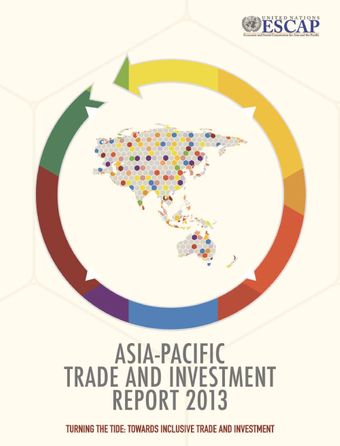Preferential trade policies and agreements

- Author: United Nations
- Main Title: Asia-Pacific Trade and Investment Report 2013 , pp 67-85
- Publication Date: December 2013
- DOI: https://doi.org/10.18356/0cb61d6a-en
- Language: English
The proliferation of preferential trade agreements (PTAs), which began in the early 1990s, continues today with ever more countries getting engaged in the process. The main drivers for this are a combination of (a) contracting demand resulting from the economic crisis and the need to find new markets and (b) a lack of progress in securing lower trade barriers through multilateral trade negotiations. Over the years, the content of PTAs as well as their membership composition have also been changing. For example, recent PTAs increasingly include several areas that continue to be outside multilateral obligations, such as competition, government procurement and investment. Also, geographical proximity has declined as a factor in PTA membership, as many agreements are interregional or even intercontinental in nature. Globally there are 375 “physical” trade agreements in force, and 150 involving Asia-Pacific economies.
© United Nations
ISBN (PDF):
9789210564236
Book DOI:
https://doi.org/10.18356/e8955a22-en
Related Subject(s):
International Trade and Finance
Sustainable Development Goals:
-
From This Site
/content/books/9789210564236s005-c006dcterms_title,dcterms_subject,pub_keyword-contentType:Journal -contentType:Contributor -contentType:Concept -contentType:Institution105
/content/books/9789210564236s005-c006
dcterms_title,dcterms_subject,pub_keyword
-contentType:Journal -contentType:Contributor -contentType:Concept -contentType:Institution
10
5



